'Pico-Crossing' makes typing in 'Animal Crossing +' explosively fast with the keyboard

In
GitHub - hunterirving/pico-crossing: hack Animal X-ing with a Pi Pico and a GameCube Keyboard Controller
https://github.com/hunterirving/pico-crossing
Hacking Animal Crossing Beyond Reason - YouTube
You can actually see how to enter characters using a controller in the Nintendo GameCube version of Animal Crossing + in the movie below.
GC version Animal Crossing e+ gameplay video 1 - YouTube
The keyboard controller used for input was released by ASCII. It was originally designed to enable chat input for the online RPG 'Phantasy Star Online' released for the Nintendo GameCube.

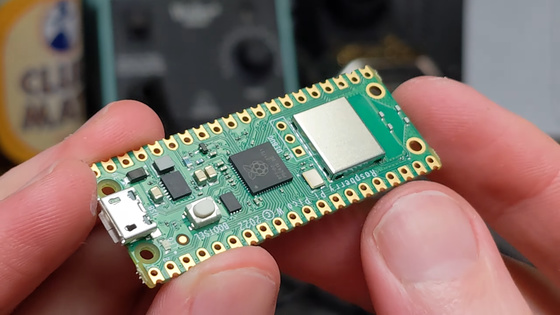
The wiring looks like this. The Nintendo GameCube, controller and keyboard controller are connected via the Raspberry Pi Pico W.
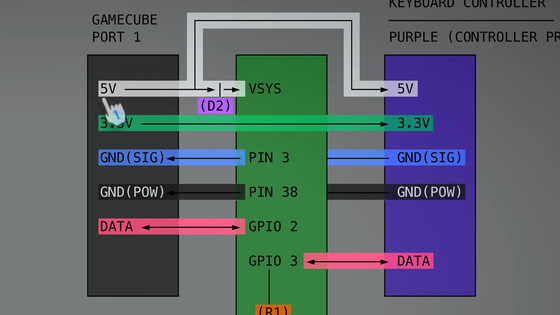
The Raspberry Pi Pico W has a two-tiered structure, disguising itself as a 'Nintendo GameCube console' when it comes to the controller, and a 'standard pad' when it comes to the console itself.
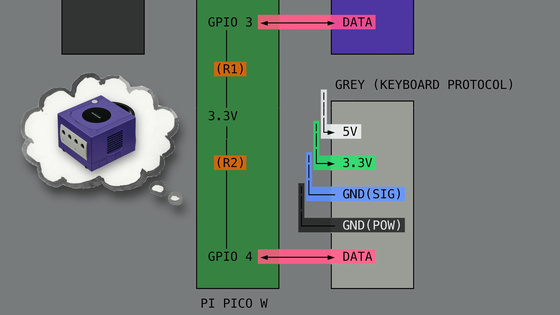
So I bought two extension cables for Nintendo GameCube controllers, cut them in half, and soldered each one to the Raspberry Pi Pico W.
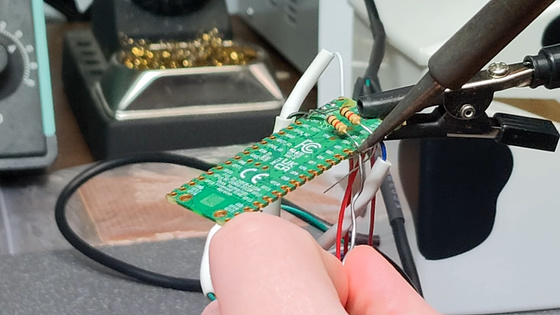
Then, a case to house the Raspberry Pi Pico W is printed out using a 3D printer.
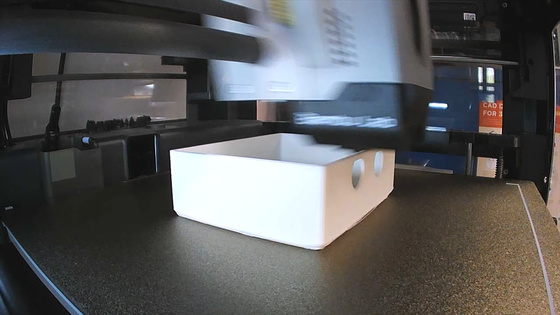
It looks like this when completed. The 3-layer x 10-column x n-row in-game keyboard is perfectly reproduced in memory, and the 'shortest path' from the current cursor position to the target character is calculated and input each time.

When you actually type on the keyboard controller, the cursor on the screen moves rapidly and text is actually entered.
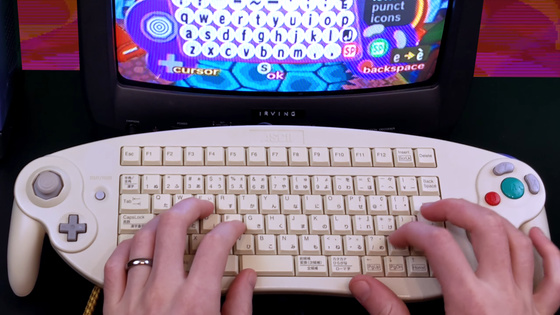
However, while ASCII's keyboard controller can input alphanumeric characters and hiragana, it has the problem that it does not support special characters or emojis.
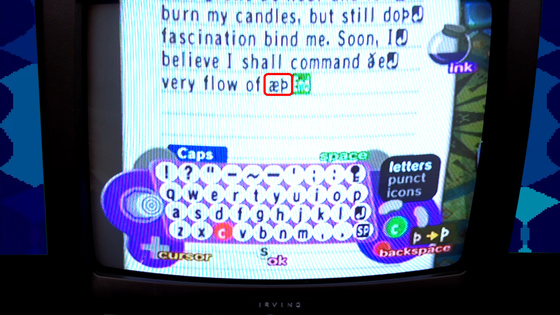
Therefore, a switch button that allows you to input special characters and emojis has been installed where the function keys are located.
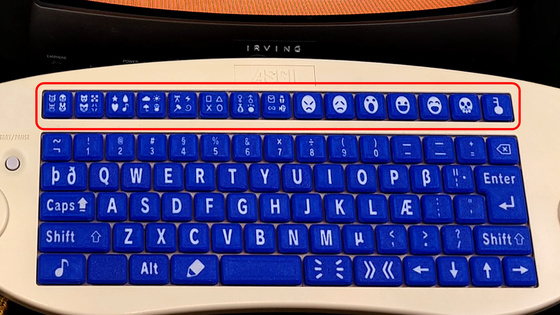
Now you can enter special characters and emojis.
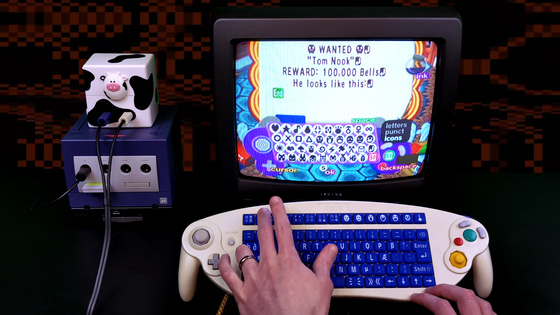
Additionally, Animal Crossing+ could read cards using a Game Boy Advance with a Card eReader+ inserted, some of which even had sheet music written on them that could be entered into the game.
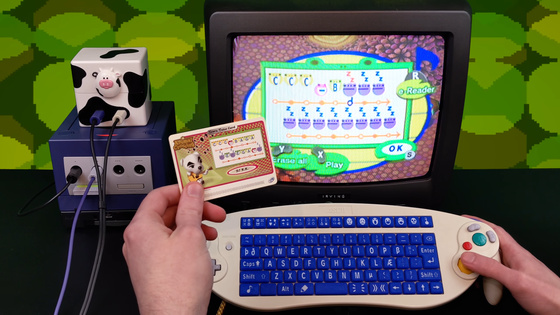
With pico-crossing, you can register the musical score code in the database, which allows you to input the score at lightning speed.
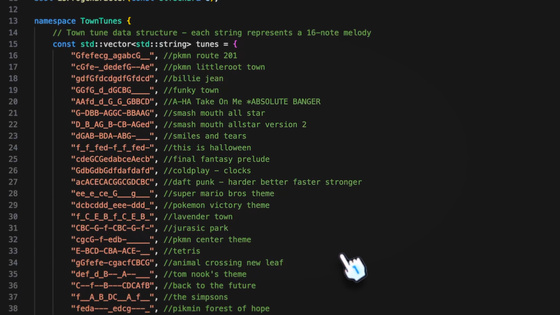
There are also some items that can be obtained by entering codes printed on magazines etc.
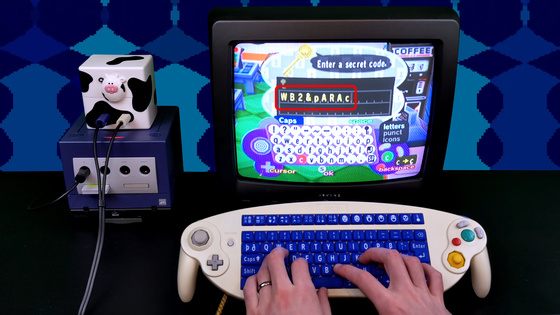
You can switch to code input mode by pressing Ctrl + Alt + key.
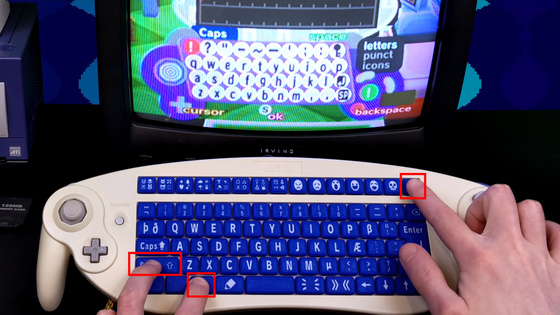
By entering the item name, the code will be automatically pulled from the database and entered.
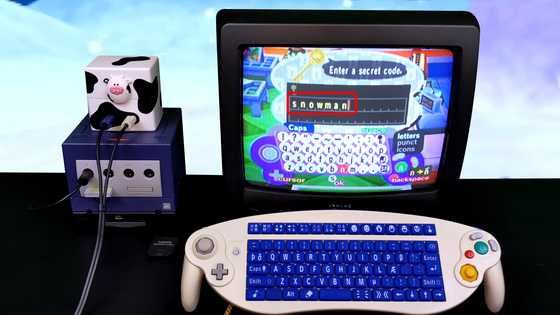
And, using the function that allows you to freely design clothes, wallpapers, etc., you can automatically input any image converted to 32 x 32 pixels with Python.
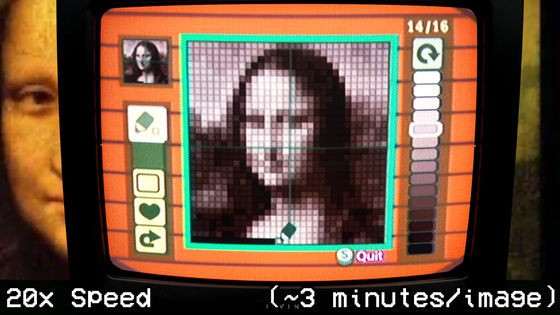
It is also possible to play videos by redrawing the frames each time, which is a rather forced method. However, the maximum frame rate is 0.0056 FPS.
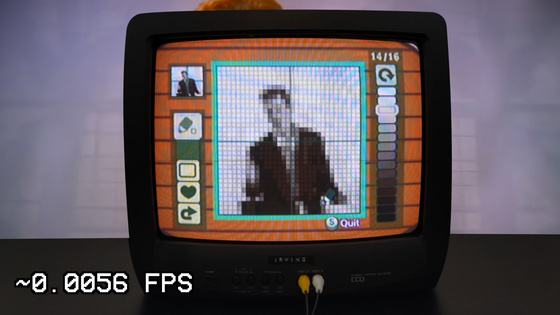
It seems that it will be possible to play games in a similar way. Below is
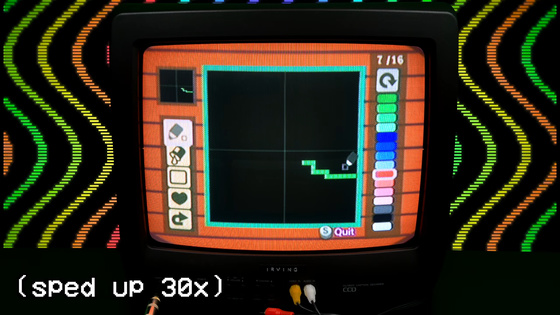
The pico-crossing source code is available on GitHub. In addition, Irvin commented to Nintendo, 'No emulation was used in the production of this project, and no game binaries were distributed or modified in any way. All footage was shot on unmodified hardware and genuine unmodified software.'